Having started their campaign so brightly, hopes and expectations were high at the Estadio Santiago Bernabeu as it filled with Real Madrid fans. They faced Real Valladolid, who secured an impressive victory of their own against Real Betis last time out, in a fixture which proved far more challenging than expected for Santiago Solari last season.
It wasn’t until deep into the second half when Real Madrid found their breakthrough as Karim Benzema’s control, spin and rocket found the bottom corner. However, the joy was shortlived as Sergi Guardiola equalised in the 88th minute with a clinical finish of his own as Real Valladolid got the tie back level on the counter.
This tactical analysis will consider what Zinedine Zidane and Sergio Gonzalez can learn from their latest outing as Zidane saw his team drop points at home for the first time in the 2019/20 campaign in La Liga.
Line-ups
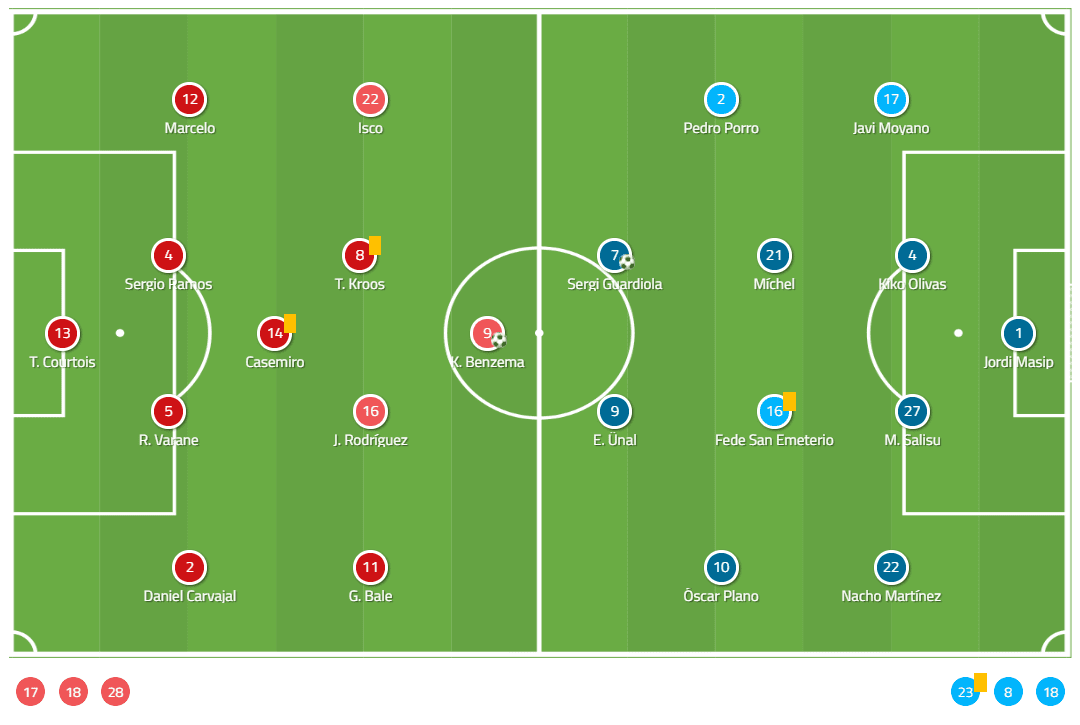
Real Madrid lined up with a side featuring only one player signed in the past four years in goalkeeper Thibaut Courtois. Isco and James Rodriguez came into the side in place of the suspended Luka Modric and Vinicius Junior. The tactics were barely different from 2015 as Zidane set his team up to go back to basics.
Real Valladolid made three changes, with Enes Unal, Pedro Porro and Fede San Emeterio coming in for Sandro Ramirez, Antonito, and Ruben Alcaraz. The idea was to provide more defensive discipline, with Manchester City loanee Porro intriguingly deployed on the flank, rather than at full-back.
James’ role
When it was announced that James Rodriguez would return to the Real Madrid starting line-up after two years on loan at Bayern Munich, many expected him to be lining up on the right-hand side of attack with Isco deployed in midfield alongside Toni Kroos and Casemiro. Instead, however, it was the Colombian who was used in the midfield three with the Spaniard being put in the frontline, alternating with Gareth Bale to swap flanks. Occasionally, the two would interchange, but James was one of the midfield three and the man chosen to replace Luka Modric.

Unlike in his first spell at the club, the role is not as adventurous as it once was. With a slower pace to the game, Rodriguez would look to get forward but was keen to be disciplined in his approach. When he did get forward, he did so through the middle, even verging towards the left. In general, James was conservative in his behaviour, being content to drop deep into the midfield and even support the backline to do his part of the teamwork.
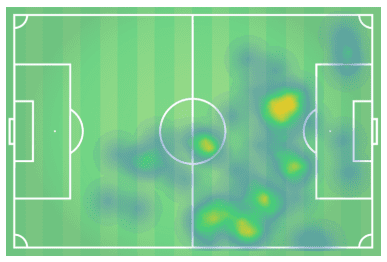
The challenge came in that the lack of movement from Isco when ahead of him on the right, denied him the chance to make penetrative runs forward. Rather than linking up, the two produced a disjointed performance. It is to be expected to a certain extent, particularly as James did not feature in a single minute of pre-season action, and he will take some time to adapt to life in Spain again. It was a promising display, showing commitment to the cause and the kind of attitude that Zidane would sure demand. Adding the attacking flair that makes him a world-class talent will come, but it remains to be seen whether a role in the midfield three would give him the freedom to do that.
Woeful full-back positioning
Critics quickly looked to blame Kroos for the equalizer, but it was down to the incredibly poor positioning, rather than his loss of possession in midfield, that Real Madrid dropped two points. Firstly, Sergio Ramos’ position must be considered. He is caught far too upfield, helping Casemiro to close down, and struggles to get back, immediately leaving a gap in the backline which has to be filled with a stretched defence, forcing Raphael Varane to move across to the right.
The most calamitous moment came as Dani Carvajal tracked back having needlessly ventured forward. Presumably having seen Casemiro beaten and Varane in two minds as to what to do, Carvajal looked to cut inside to close down the passing option. However, coming back from such an advanced position meant that he was wrong sided and effectively only served to direct the pass forward. Meanwhile, Guardiola had spotted his mistake and darted to the right to exploit the area of space he had left.

The final error came from Varane himself, who hesitated and checked the line as Oscar Plano opened his body shape to make the pass. Varane’s hesitation saw him try to catch Guardiola offside incorrectly. The result was that he was stood still by the time the ball was on its way through to the forward when he could perhaps have managed to intercept the pass had he kept up his pace and moved towards the run being made behind him. Blind-sided and suddenly without the support he was expecting from Carvajal, Varane could do nothing. A calamity of errors.
The wrong kind of chances
Real Madrid had 22 shots in total, but only five were on target, for a shot accuracy of 22.73%, with only one chance for Benzema ranking above 0.17 xG. That figure would have ranked as the fifth-lowest compared to their 2018/19 statistics, showing a concerning ratio, whilst the xG of 1.76 was higher than their xG of 1.36 against Celta Vigo, where the team scored three goals. This analysis shows that many of these chances of low xG came from crosses into the box, and as can be seen in the below image, these were not of optimal quality.
Zidane has long believed that his team must focus on spreading the ball wide and looking to cross it into the box when possible. On this occasion, there were 38 attempted crosses, 16 of which were completed, marking the highest figure since October 2018. When looking at the distribution of these crosses, it is clear why they created low-quality chances, with several being put too close to the goalkeeper or too far to either post. From the right, where Carvajal topped the cross charts with 12 attempts, completing only four, barely any of the passes found the ideal area between the six-yard box and the penalty spot in a central position.
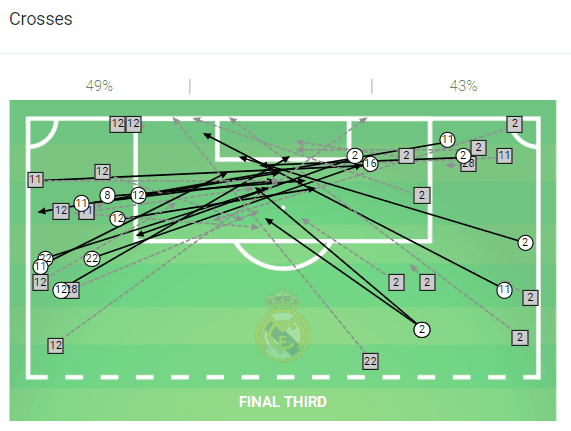
This constant bombardment of the box may have been effective elsewhere, but Real Valladolid is a structured and well-organised side who defend such attacks well. Perhaps even more concerning is that the same fixture last season produced the third-highest number of crosses throughout 2018/19, yet it did not draw results as Real Madrid’s two late goals in that encounter did not come from crosses. Again, the technique became to overload the box and pile in the crosses, but it simply led to a lack of opportunities as Benzema did not have space to make the movement which can make him so deadly from such situations.
An effective set-piece routine
If there was a positive to take from Real Madrid’s play from out wide, it came from their use of corners. For some time, Los Blancos have failed to take advantage of such set pieces given the aerial strength available in their ranks, but it is something that Zidane has clearly had his team working on throughout pre-season and it drew results, even if it did not lead to a goal or serious chance on this occasion. That said, from Real Madrid’s four chances, three of them led to a shot with an impressive conversion ratio. Three of them used the same routine to set up the maneuver.
Whenever the corner is given, Kroos wastes no time in getting across to collect the ball and prepare, not willing to allow the defensive set-up to get comfortable before the corner is taken. Immediately, he considers his options, primarily looking towards the penalty box to see if there is an option available or if there is a weakness or unfocused player in their set-up. Meanwhile, Marcelo, or occasionally Carvajal on the right, will provide a deep option, showing little interest but being alert and ready to provide a passing option without attracting too much attention from their marker.
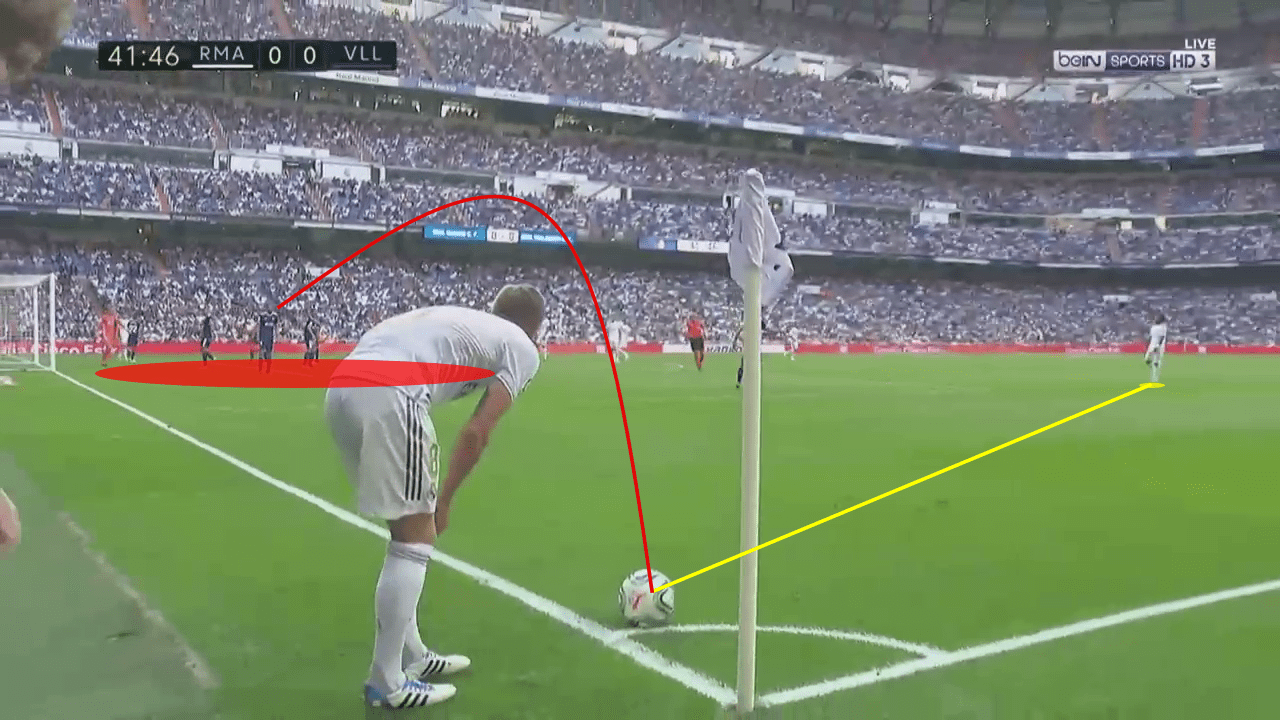
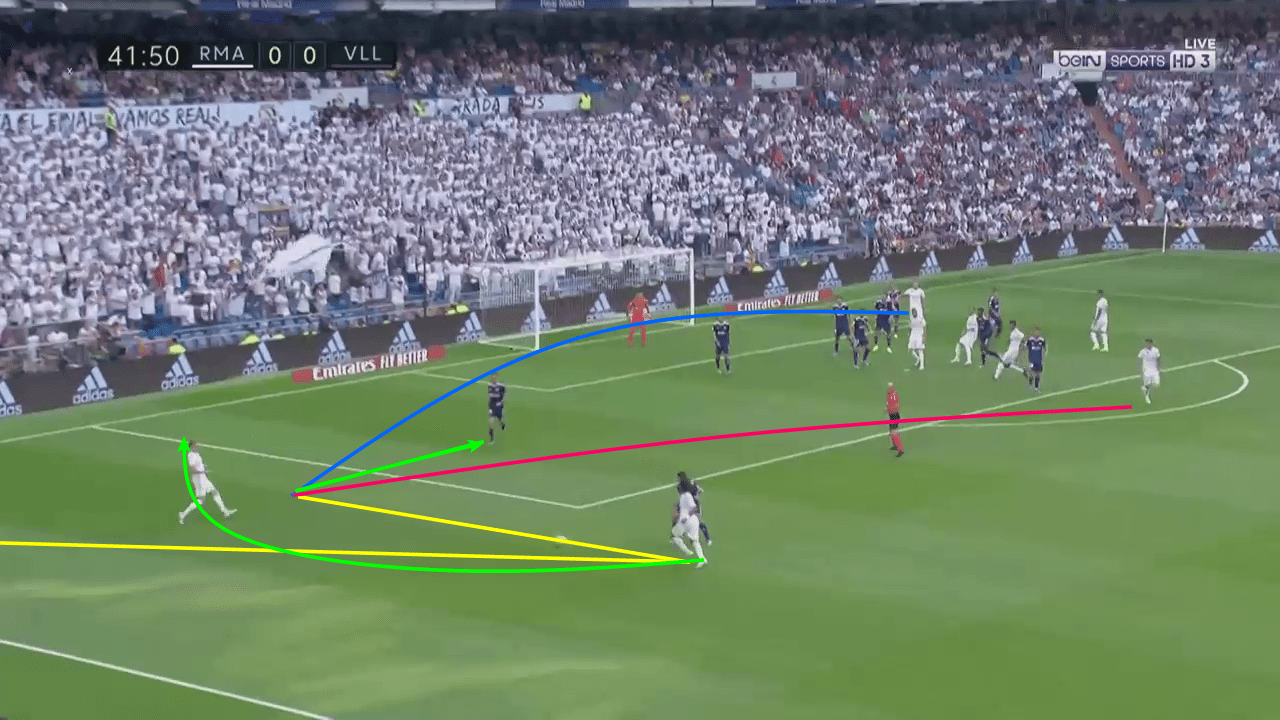
Once the pass is played, Marcelo can either play the cross in or cut back to Kroos. Typically, the ball will be played to Kroos. Once this is the case, the Brazilian pursues the green approach in the above image, providing an overlapping option in case the German looks to take on his man if his passing channels are blocked. The other two alternatives are to play a direct cross into the box straight away, while the other was the most frequently used approach against Real Valladolid. Here, on the red line, Kroos will cut the ball back to the edge of the box where it will usually be Casemiro who is waiting ready to take a shot. His poor finishing means it often ends in disappointment, but it can alternatively also keep the move flowing.
Conclusion
Whilst Real Madrid did not play poorly and they did enough to win the game, their attacking strategy was one of creating several chances of low xG, rather than a few high-quality ones, as was the case for Real Valladolid. This approach is concerning as it could work against smaller sides, as it did against Celta Vigo last weekend, but would demand miracles against stronger opposition, which does not bode well for the club’s Champions League campaign. The experiment of returning Isco and James to the line-up did not produce immediate results but looked promising, though the team’s greater problems lie in defence and their offensive strategy, wherein both cases it is the two full-backs that are letting the side down.

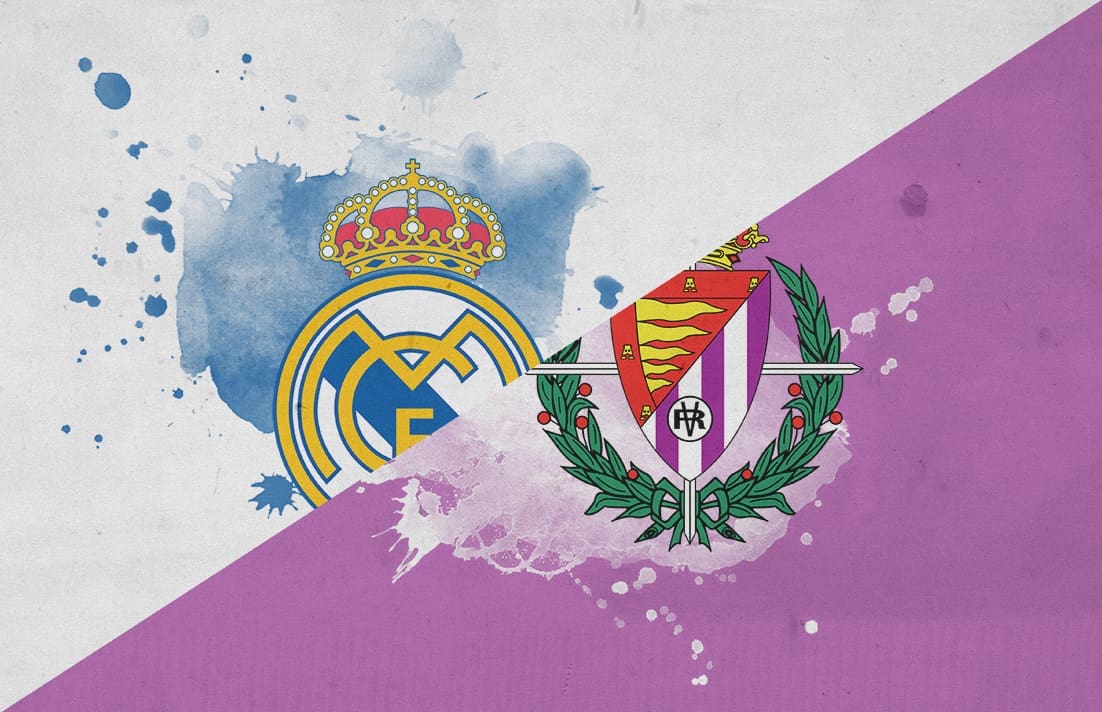



Comments